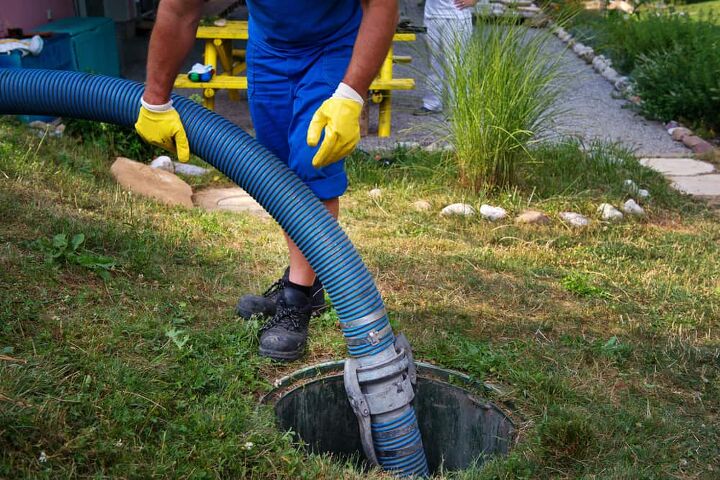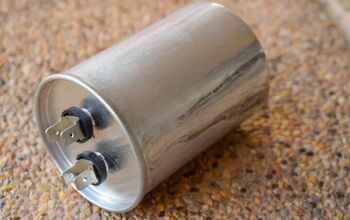Top Alternatives To Septic Tanks (8 Options to Consider)

For many homes, it’s impossible to have a conventional sewage system. The most common reason for this is the fact that sewage services don’t reach their property. There may be situations where a septic tank cannot be installed on the property do to logistical or geographical issues. Thankfully, there are plenty of alternatives to choose from if you’re facing this septic conundrum.
The major alternatives to septic tanks include mound, aerobic septic, and cesspool systems, as well as sander filter, constructed wetlands, and drip irrigation. The mound system is most popular for soil that is too shallow over bedrock or for a water table which is too high. The alternative will depend on the conditions, usage levels, and soil.
Each septic tank alternative has pros and cons, and there are lots of different solutions. No matter what your needs are, and no matter what you are looking for in a wastewater treatment system, you will find it in one of these eight alternatives.
Top Alternatives To Septic Tanks
There are times where specific properties are unable to be hooked up to the municipal sewer system. These are typically the properties that end up with septic tanks. However, a septic tank may not always be possible to install, which is why it’s essential to know the alternative solutions.
While installing a septic tank seems like it would be a reasonably straightforward job, this assumption couldn’t be farther from the truth. If the soil on your property is too dense or too shallow, or the water table is too high, this will make it impossible to install a septic tank. You will need to choose from an alternative solution.
1. Build Your Own Septic Tank
It’s essential that you contact your local authorities to determine if this is an option for you. You will need a building permit as there are local ordinances and rules you will need to comply with. If you choose to build your own septic tank, don’t expect this to be a cheap alternative, as it will most likely cost between $1,500 to $4,000.
Steps To Build Your Own Septic Tank
- Acquire a permit. It’s important to check first with your local health department and county government offices if you can build the systems you want for your property. If they are, then know all the requirements you need and get all the permits required.
- Plan your project. The next important step is to determine the best place to put your septic system. Depending on the method you choose, your country may require soil testing to know the percolation rate or the drainage ability of the soil in the property.
- Prepare the site. Using a backhoe or shovel, start digging the pit. It’s best to hire a digging company or hire a couple of people who can do the job for you – but this is very time-consuming.
- Connect the system. With the site ready and the septic tank placed, you might finally connect the components of the septic system altogether. Connect the pierced drain pipe to the pipe coming out of the septic tank.
- Finish up. Cover the punctured pipe with more gravel and a thin sheet of filter fabric to keep the dirt from sifting down to the drainpipe. Lastly, cover the trench with soil that was initially removed from the trench.
2. Aerobic Treatment Systems (ATS)
Aerobic systems are essentially a small-scale sewage treatment system you can put in your home. It works the same as a septic tank system but uses an aerobic process, which involves more air and oxygen.
These systems are commonly found in rural places and can be utilized for a small community or a single residence. The effluent of the wastewater which this system generates is of better quality compared to the traditional approach. If you chose to install an ATS, expect to pay between $10,000 and $20,000.
Pros And Cons Of Choosing An Aerobic Treatment System
There are many advantages to choosing an ATS in place of a septic system, such as:
- It saves space
- Generates less pollution in groundwater
- The ability to choose from a variety of design options
- Easy to install
- Reduces septic odor
However, the downfall is that these systems are high maintenance and can cost up to three times the amount of a traditional septic system.
3. Waterless Systems
For residents that are looking for a more eco-friendly alternative, waterless systems are more commonly used. But how does it exactly work? Rather than using a septic tank, you’re essentially using your toilet as a compost bin. Some toilets have a remote system that drops the waste down a chute to a compost bin.
This bin is located in a crawlspace somewhere under or outside of the property. If composting doesn’t sound appealing to you, you can also go for incinerating toilets that will burn your waste to ash. Additionally, some acidic chemicals can destroy the waste for you as well. Waterless models cost between $1,100 and $2,000.
Advantages vs. Disadvantages Of Waterless Systems
If you’re looking for an option that favors compositing, or eco-friendly alternatives to septic tanks, then the waterless system is a great choice. Other benefits include:
- Water conservation ( Expect to save up to 6,600 gallons of water per year, per person)
- Cost-effective
- Onsite waste treatment
- Less hazardous
- Reduce environmental degradation
- Cheaper to maintain
While there are many benefits to the waterless system, this particular system requires extra maintenance; otherwise, you may end up with odor and pest issues that are almost impossible to get rid of. Not to mention, this option is more expensive than the low flow models.
4. Plastic Leach Field Chamber Systems
Plastic leach field chamber systems use a standard septic tank. Rather than the traditional pipe leach field, the leach field is made of interlocking polyethylene arches that offer a continuous drainage area. The chambers generate a space for waste to flow through, so gravel or geotextile is only optional.
This wastewater treatment system consisting of beds or trenches, along with one or more distribution pipes or open-bottomed plastic chambers, installed in appropriate soils. These chambers get wastewater flow from a septic tank or other treatment device and transmit it into the ground for final treatment and disposal. Expect to pay between $1,500 and $10,000 for this system.
Is A Plastic Leach Field Chamber System Right For You?
The plastic leach field chamber systems are easier to install, and they require less equipment. However, they can be expensive if you don’t have low-cost gravel available to you. Not to mention, the effectiveness is not always guaranteed. So, it would help if you thought of using other alternatives before deciding to use this option.
If you believe a plastic leach field chamber system is the best option for you, some advantages of these systems include:
- Longer lasting than conventional septic systems
- Affordable
- Easy inspection of chambers
- Smaller carbon footprint
Again, these systems are only affordable if you have low-cost gravel available to you. Otherwise, the price can be costly.
5. Mound Septic Systems
Mound and raised bed septic systems are almost similar to conventional systems, except that the soil is specially set up to generate an area where the effluent is treated. In these systems, small distribution pipes are set into a layer of gravel that sits on top of a layer of sand. The whole area is covered entirely with topsoil to form a mound.
Furthermore, the system includes a treating chamber that gathers the wastewater that leaves the septic tank. This chamber releases effluent at a controlled rate to avoid overloading of the leach field. In most systems, an alarm makes a sound if the pump malfunctions and puts the leach field at risk.
The mound septic systems can cost between $10,000 and $20,000 with a $500 annual maintenance cost.
Weighing The Pros And Cons Of Mound Septic Systems
Some of the benefits of mound septic systems include:
- Great for places that can’t have in-ground septic systems
- No extreme excavation work
- It doesn’t contaminate oceans or rivers
However, the mound septic systems are more expensive than a conventional design, and you do need to include a pump to help pull the waste through a treatment process as it cannot just sit where it lands.
6. Sand Filter Septic Systems
The sand filter septic systems are used for the pre-treatment of waste coming from your septic tank. A standard sand filter uses two tanks – the first is where the effluents in the wastewater are allowed to settle, and the second tank gets the water from the first tank and pumps it into the sand mound for filtration.
This septic system is a smart solution for wastewater treatment problems in places with not enough soil. These systems consist of the septic tank, sand filter, pump chamber, and drain field.
Sand is used to compensating for the insufficient amount of soil at the site. The sand filter may consist of a large concrete box full of sand. A layer of gravel is laid on top of the sand with a system of narrow pipes installed in the gravel. This type of system can cost between $6,000 and $10,000.
Pros And Cons Of A Sand Filter Septic System
As with every option, it’s essential to know the pros and cons to decide if this is the best option for you. Some pros of a sand filter septic system include:
- It’s perfect for places that don’t have enough soil to filter out water waste naturally.
- No intensive use of energy for cleaning wastewater
- Great for rocky areas
However, waste usually gets stuck as the pipes are smaller. Not to mention, tanks typically overflow if there’s too much wastewater.
7. Drip Distribution Systems
Drip distribution systems are the same as the structure of conventional septic systems. However, it includes an aerobic pre-treatment chamber and filtering device to treat the wastewater further.
The treated water then goes to different drip irrigation tubes to dispense the water over a large area. This water is clean enough to use for irrigating a lawn or non-edible plants. Plants eliminate extra nitrogen from the water, further cleansing it. A drip distribution system typically costs between $6,000 and $10,000.
Advantages vs. Disadvantages Of Drip Distribution Systems
Drip distribution systems are not very common anymore but do have their benefits such as:
- Works excellent in areas with high water tables
- It doesn’t require regular pumping services
However, the downside is that these systems tend to have more components than traditional tanks, and they may not work on smaller properties.
8. Constructed Wetland System
If you are looking to take a slightly more natural approach to your wastewater system then you may want to look into a Constructed Wetland System. A constructed wetland system uses carefully selected and intentionally placed wetland plants and soils to help improve water quality.
The water is filtered out by plants, and then the larger solid materials eventually break down naturally. Bacteria and the plants act as natural “treatment” to the wastewater, effectively filtering it through more organic processes.
Hire A Professional For Initial Inspection
Some properties may not be suitable for the choices listed above. Therefore, while hiring a contractor to check out your property may seem like an unnecessary step, but it can save you a lot of money in the long run.
Nothing is worse than spending thousands of dollars only to find out your land will not work for that specific type of septic alternative. So, instead of making a multi-thousand dollar mistake, it’s better to get advice from a professional before beginning your project.
Our Final Take
If your property cannot hook up to the municipal sewer system, yet it’s unfit for a conventional septic tank, there is no need to worry. For situations like this, there are plenty of alternatives to septic tanks that you can choose from. However, initially, you may want to hire a professional to check your land so that you can better understand the available options.
By understanding each choice’s advantages and disadvantages and comparing it to your budget, you can then choose the option that’s best for your circumstances. However, it’s crucial that you check with your local authorities to ensure your choice complies with local laws and ordinances.
Related Content: Septic Tank Alternatives For Land That Won’t Perk | Cesspools vs. Septic Tanks | Septic System vs. Sewer | Cost of An Aerobic Septic System | Mound Septic System Cost Related Guides
How To Calculate Septic Drain Field SizeHow To Locate Septic Tank Field LinesSeptic Tank Dimensions

Heather is a passionate writer who loves anything DIY. Growing up, she learned everything from home repairs to design, and wants to share her tips with you. When she's not writing, she's usually hiking or searching for her next DIY project.
More by Heather Robbins













![10 Best Cordless Leaf Blowers – [2022 Reviews & Ultimate Guide]](https://cdn-fastly.upgradedhome.com/media/2023/07/31/9070789/10-best-cordless-leaf-blowers-2022-reviews-ultimate-guide.jpg?size=350x220)













